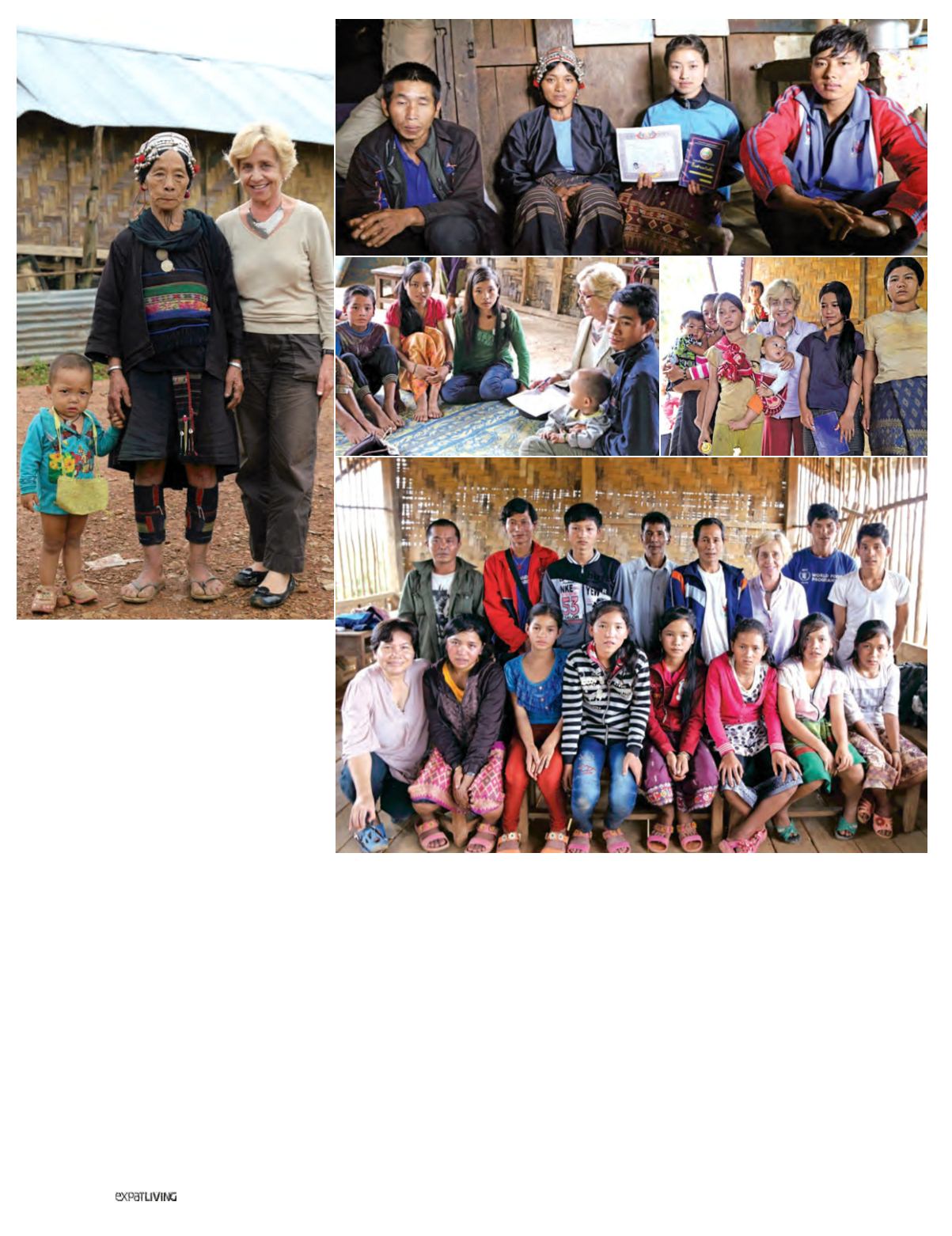

LIFE&FAMILY
168
May15
“The area is just 30km from China,
and 50km from Thailand and the
Myanmar border,” adds Marie, “so
there’s a real risk that young girls may
walk to the bridge crossings and sell
themselves.”
A scholarship provides the opportunity
for them to go instead to a bigger town
and get an education, while their family
receives support. As Marie says, this
slows down the cycle of poverty. “For
me, the exciting prospect is to make a
house inside the children’s brain, not
only above their head.”
But how do the children sign up?
Marie doesn’t choose the girls; that is
done by partner organisation, NCA, with
permission from the village officials. “It
takes a lot of time, as there is almost no
precedent of sending Akha girls to study
here. Once the family consents, the
children are interviewed to assess their
willingness to attend full-time study. They
also give a commitment not to marry for
seven years – in these villages, some
girls marry at 12 or 13 years of age.”
The project is changing the attitude of
the villagers, and this has flow-on effects
on other communities too.
With the scholarships established,
Marie is now engrossed in a partnership
with NCA and an established NGO to
build a 60- to 90-bed secondary school
dormitory for ethnic male and female
Akha, Hmong and Khmu students, about
two hours outside of Luang Prabang.
“It will be a secure place to stay and
study, rather than a flimsy bamboo hut
that can be washed away in heavy rain,
destroyed in one of the frequent seismic
tremors or easily accessed by passing
men, making the girls vulnerable to
rape.” A safe dormitory is essential to
the girls’ completing their studies in
the nearby secondary school. If this is
successful, Marie has her sights set on
building a secondary school for 200
kids, within five years. In Laos, the Akha
and Hmong are minority ethnic groups,
dominated by the 60 percent Laotian
majority. Marie admires the strength
and courage of both these tribes, and
says that they are often overlooked in
the provision of services. But Marie is
resolute, and education is her highest
priority for young female ethnic students.
“It can give these kids a better world.
This concept is so well known in the
Western world: for women, education is
a passport to have a better life through
more options, and access to a job.”
Students and families
in Laos



















